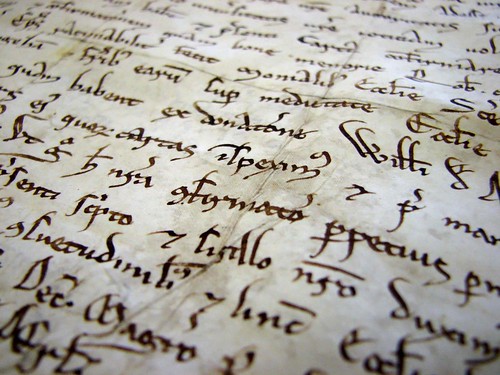"63 years ago, American plant breeder Norman Borlaug developed the high-yielding, stem rust-resistant wheat that led to the Green Revolution, and for which he was awarded the Nobel prize".
The variety, fabulously resistant to the fungal problem of the day, sped the practise of monocropping with promiscuous fertilizer and chemical assistance.
Diversity plummeted with the genetic makeup of cultivated wheat around the world severely diminished.
Enter a new fungal disease Ug99 and there is a desperately urgent situation and an alliance of corportist and philanthropists busy on the reapings.
"A WHEAT disease that could destroy most of the world's main wheat crops could strike south Asia's vast wheat fields ... leaving millions to starve.. has spread from Africa to Iran, and may already be in Pakistan...(which is)the gateway to the Asian breadbasket, including the vital Punjab region".
Frantic plans include enforced fungicide spraying and outlawing planting of wheat in corridors between infected regions but "the only real remedy will be new wheat varieties that resist Ug99, and they may not be ready for five years. The fungus has just pulled ahead in the race".
If you think this is good opportunity for Monsanto to enter and control the wheat market, you'd be astute. It was forced to abandon transgenic (gmo) wheat in 2004 because of a double out cry from farmers fearful of losing markets in Europe and Japan and active consumer's repugnance. It worked.
But Monsanto is persistent; Borlaug is still at it joined by all the usual suspects working to pave the way for GMO wheat.
In a healthy culture of farming, many diverse and dispersed (everywhere) wheat fields check this type of holocaust. The minute, manageable entry of a new pathogen is buffered in the symbiotic, collaborative processes of nature on the farm. Multi-gene resistance is built up and spreads, and passes through exchanged seeds to other farmers in nearby bioregions. Monocropped, monopol-seed in vast tracks of dependent (chemicals fertilizer) is a sitting duck for foreign invaders.
The absurdity of losing the corridors (the bioregions in between) that would be a natural local for building resistance.
Monsanto may have the wheatpill for the latest crop catastrophe (they need them). And if so, draconian rules to speed its conquest will be enforced.
We have to be in the way, in the corridors with old wheat that already have genes coded for resistance (20 % do) and horizontal breeding for resistance, in farms that resemble gardens for their action and biodiversity. We have to have local food security as primary goals of regional food production and regional governance in these matters. We need to get at this fast. In other words, we need to stop GMO wheat by/and having alternatives in place.
Read more about UG99 in New Scientist and here.
Given vulnerable captive agriregions, Ug99 can be seen as akin to a bioweapon. Some have.
Raul Robinson's excellent book Return to Resistance is online.
Subscribe to:
Post Comments (Atom)



4 comments:
Maybe this book is back in print just in time?
Small-Scale Grain Raising
An Organic Guide to Growing, Processing, and Using Nutritious Whole Grains for Home Gardeners and Local Farmers
by Gene Logsdon
Google’s Blog alert sent me to this post because of the term “regional governance.” This article should be useful to subscribers of Regional Community Development News, so I will include a link to it in the February 25 issue. The newsletter will be found at http://regional-communities.blogspot.com/ Please visit, check the tools and consider a link. Tom
Hi Tom
Its a good link, thanks for sharing it.
Here is another wheat story I came across today.
http://www.minnpost.com/stories/2009/02/20/6832/minnesota_researchers_take_on_deadly_fungus_threatening_worlds_wheat_crop
Post a Comment